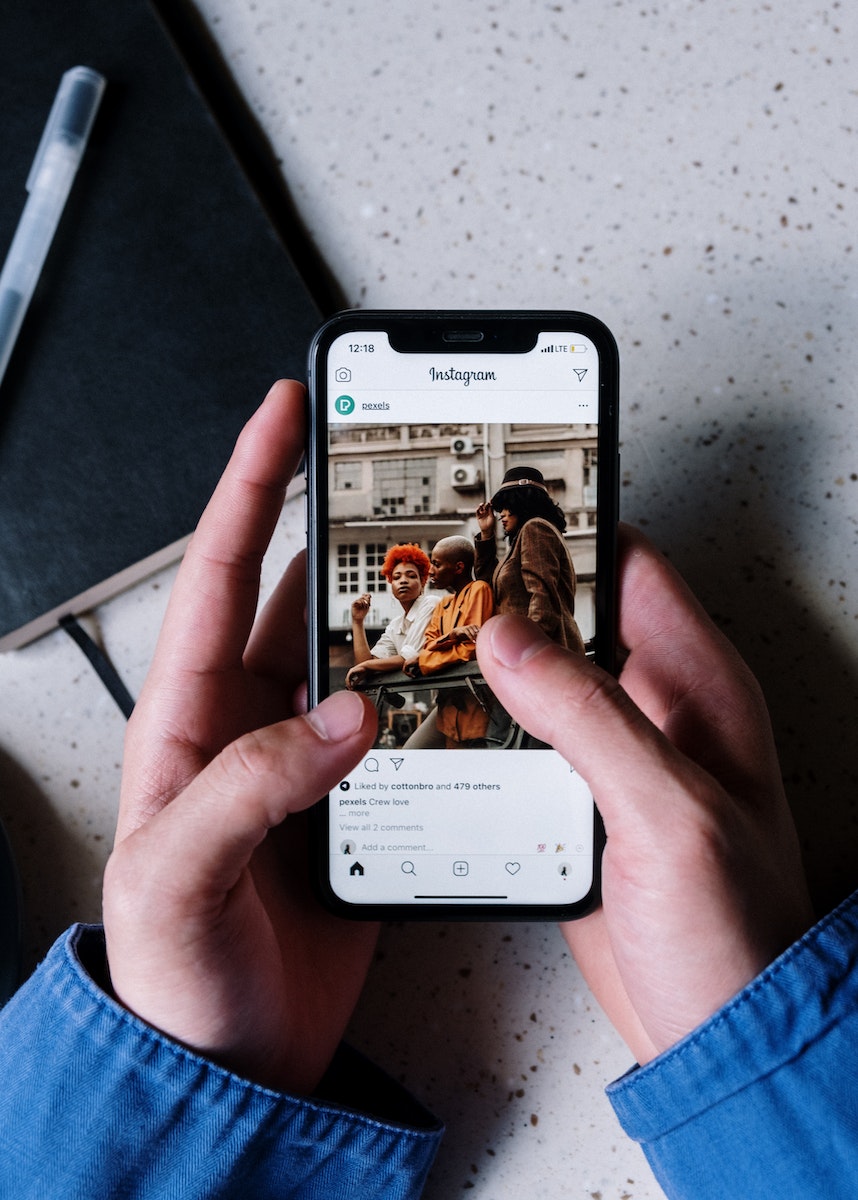Are you tired of hearing about the same old ways to make money on Pinterest? Don’t worry, because I’m here to tell you that you don’t need a blog to make a profit from this visual platform.
In fact, there are plenty of other methods that can be just as effective – if not more so – than the traditional blog route. Whether you’re a seasoned Pinterest user or just starting out, there are several strategies that can help you monetize your account without having to create and maintain a full-fledged blog.
From affiliate marketing to sponsored posts and beyond, read on for tips and tricks on how to turn your Pinterest presence into a profitable venture.
Setting Up Your Pinterest Account For Success

Welcome to the world of Pinterest, where you can turn your passion into profit. If you’re looking to make money on Pinterest without a blog, then it’s essential to set up your account for success.
The first step is to create eye-catching pins that attract attention and encourage clicks. To achieve this, focus on pin design by using high-quality images and incorporating bold fonts and attractive colors. Ensure that your pins are visually appealing and relevant to your target audience.
Next, organize your boards in a way that’s easy to navigate and reflects your niche. Use descriptive board titles and categories so that users can easily find what they’re looking for.
Hashtags are an essential part of any successful social media strategy, including Pinterest. Incorporate relevant hashtags into your pin descriptions to increase visibility and reach. Remember not to overuse them as this could be seen as spammy by the algorithm.
Additionally, write compelling pin descriptions that give users a reason to click through to your content.
Lastly, don’t forget about engaging with your followers. Respond promptly to comments and messages, thank them for their support, and offer value through helpful tips or exclusive offers. Building relationships with your audience will help you establish trust and credibility while increasing the chances of making a sale.
Your Pinterest account is now ready for success! By focusing on these aspects of pin design, board organization, hashtag strategy, pin descriptions, and engaging with followers, you’ll be well on your way to making money on Pinterest without a blog.
Identifying Your Target Audience

When it comes to making money on Pinterest without a blog, identifying your target audience is crucial. But how do you go about this? Here are some tips:
Niche selection
Determine what niche you want to focus on. This will help you narrow down your audience and tailor your content to their interests.
Demographic research
Conduct research on the demographics of your target audience, such as age, gender, location, and interests. Use this information to create content that resonates with them.
Pinning schedule
Create a pinning schedule that aligns with your audience’s behavior patterns on Pinterest. For example, if they tend to be most active in the mornings or evenings, adjust your pinning schedule accordingly.
Content curation
Curate high-quality content that aligns with your niche and target audience’s interests. This will help build trust with them and establish you as an authority in your niche.
Hashtag strategy
Use relevant hashtags in your pins to increase their visibility and reach a wider audience. Research popular hashtags in your niche and use them strategically in your pins.
By taking the time to identify your target audience and tailor your content to their interests, you can make money on Pinterest without a blog. Remember to stay consistent with your pinning schedule and continue curating high-quality content that resonates with your audience.
Happy pinning!
Creating High-Quality And Engaging Pins

Now that you know how to set up your Pinterest account and find profitable niches, it’s time to create high-quality and engaging pins.
Pin design is crucial when it comes to grabbing the attention of potential customers. Make sure your pins are visually appealing and easy to read. Stick to a consistent color scheme and font style, as this will help increase brand recognition.
Visual content plays a significant role in Pinterest marketing. Use high-resolution images or videos that showcase your product or service in action. Avoid using stock photos as much as possible, as they can come across as generic and unoriginal. If you’re not confident in your graphic design skills, consider hiring a freelancer or using templates from Canva or Adobe Spark.
Pin optimization involves including relevant keywords in your pin descriptions, titles, and hashtags. Use these elements strategically to increase the visibility of your pins on search results pages. Additionally, make sure your pin descriptions accurately describe what users can expect when they click through to your website or product page. This will help reduce bounce rates and increase overall pin engagement.
Remember, the ultimate goal of creating high-quality and engaging pins is to drive traffic back to your website or product page. Utilize all available features on Pinterest, such as rich pins and buyable pins, to make the purchasing process seamless for potential customers. By following these tips and consistently creating eye-catching pins, you’ll be on your way to making money on Pinterest without a blog in no time!
Joining Affiliate Programs

Ready to start making money on Pinterest without a blog? Joining affiliate programs is an excellent way to do so. But how do you choose the right program for you?
It’s essential to select profitable programs that align with your niche and audience. Do your research and determine what products or services your followers are interested in. Once you’ve chosen a few potential programs, look at their commission rates and payout thresholds to ensure they’re worth your time.
Navigating affiliate networks can be overwhelming, but it’s essential to find ones that work for you. Some popular networks include ShareASale, Rakuten Marketing, and Amazon Associates. These networks offer various programs across different niches, making it easier for you to find ones that fit your audience.
When choosing a network, consider its user interface, payment options, and customer support.
Creating effective pins is crucial when promoting affiliate products on Pinterest. Make sure your pins are visually appealing and provide value to your audience. Include call-to-actions (CTAs) in your pin description and use keywords relevant to the product or service you’re promoting.
To maximize click-through rates, consider using rich pins and tailoring them specifically to the product or service you’re promoting.
Tracking your earnings is vital as it allows you to see which pins are performing well and which ones need improvement. Use tools such as Google Analytics or Pinterest Analytics to track clicks, impressions, saves, and more. This information will help you optimize your strategy moving forward by focusing on what works best for your audience.
By following these steps, joining affiliate programs can be an excellent way for you to earn money on Pinterest without a blog. Remember always to choose profitable programs that align with your niche and audience; navigate affiliate networks effectively; create effective pins that maximize click-through rates; track earnings regularly!
Selling Your Own Products

Selling your own products on Pinterest can be a lucrative venture, but it requires careful planning and execution. One of the first things you’ll want to consider is your product selection. Make sure that the products you choose are aligned with your brand and will resonate with your target audience.
It’s also important to think about logistics such as shipping and customer service before launching. Once you’ve selected your products, it’s time to think about pricing strategy. You’ll want to strike a balance between making a profit and keeping prices competitive. To do this, research what similar products are selling for in your market and adjust accordingly. Don’t forget to factor in any shipping or handling costs when setting prices.
Product photography is another crucial element of selling on Pinterest. High-quality photos that showcase your product from multiple angles can make all the difference in attracting potential customers. Consider investing in a professional photographer or taking a photography course if you’re not confident in your own skills.
When it comes to shipping logistics, be transparent with customers about estimated delivery times and any potential delays or issues that may arise. Stay organized and keep track of orders so that you can quickly resolve any problems should they arise. Providing excellent customer service is key to building trust with customers and encouraging repeat business.
Respond promptly to inquiries and complaints, be courteous and helpful, and go above and beyond whenever possible. Remember: Selling on Pinterest takes time, effort, and patience. But by selecting the right products, pricing them competitively, showcasing them through high-quality photography, nailing down shipping logistics, and providing top-notch customer service – you can build a successful e-commerce business without ever needing a blog or website!
Using Pinterest To Drive Traffic To Your Website

Picture this: you’re scrolling through Pinterest and stumble upon a gorgeous pin. You click on it and are directed to a website with the exact product you were looking for. That’s the power of using Pinterest to drive traffic to your website!
Here’s how you can optimize your pins, design eye-catching graphics, automate your posting schedule, and promote your content.
First things first, pin optimization is key. Make sure all of your pins have a clear title and description that includes relevant keywords. Use high-quality images that are sized correctly for Pinterest (ideally 600×900 pixels). And don’t forget to add hashtags to help users find your content!
Next up, pin design is crucial for catching people’s attention. Use bright colors, bold fonts, and eye-catching graphics. Create multiple pins for each piece of content and test which designs perform best. Don’t be afraid to get creative – try adding text overlays or using unique shapes in your designs.
To save time, use pin automation tools like Tailwind or Hootsuite to schedule your pins in advance. This way, you can ensure that you’re consistently posting fresh content without having to manually post every day.
And finally, promote your content by joining group boards in your niche and collaborating with other creators in your industry.
By following these tips for optimizing your pins, designing eye-catching graphics, automating your posting schedule, and promoting your content effectively on Pinterest, you’ll be well on your way towards driving more traffic to your website!
Collaborating With Brands And Influencers

Now that you understand how to use Pinterest to drive traffic to your website, let’s talk about how you can make money on the platform without even having a blog.
One way to do this is by collaborating with brands and influencers. As a Pinterest marketing expert, I highly recommend exploring sponsorship opportunities as well as influencer outreach.
When it comes to negotiating rates for sponsored content or brand partnerships, it’s important to know your worth. Don’t undervalue your time and effort in creating high-quality pins that will promote their products or services.
A good rule of thumb is to charge based on the number of followers you have and the level of engagement on your pins.
Networking events are also a great way to meet potential sponsors or partners. Attend conferences or events related to your niche and connect with people who share similar interests. This can lead to exciting collaborations and even more ways for you to make money on Pinterest.
Remember, there are many ways to monetize your presence on Pinterest without having a blog. With the right strategy and mindset, you can turn your passion for pinning into a profitable business venture.
Offering Pinterest Management Services

Looking to monetize your Pinterest skills without starting a blog? Consider offering Pinterest management services. As a Pinterest marketing expert, you can help businesses grow their online presence by managing their Pinterest accounts and creating visually appealing pins that attract engagement and drive traffic to their websites.
To get started with client acquisition, consider reaching out to small businesses in your niche or industry on social media or via email. Showcase your expertise and highlight the benefits of having a professional manage their Pinterest account. Once you have secured clients, it’s important to establish pricing strategies that are fair for both parties. Consider charging hourly rates or offering monthly packages based on specific deliverables.
As your business grows, it may become challenging to manage all aspects of your clients’ accounts while also focusing on acquiring new clients. This is where time management and outsourcing tasks become crucial. Consider hiring virtual assistants or delegating certain tasks to other team members in order to free up more time for client work. And always remember the importance of contract negotiation – ensure that both you and your clients are protected with clear expectations and terms outlined in writing.
Utilizing Promoted Pins For Increased Visibility

With Pinterest’s promoted pin feature, you can increase the visibility of your products or services to a wider audience. Promoted pins allow businesses to target specific demographics, keywords, and interest groups. By doing so, you can ensure that your ads are being seen by the right people at the right time.
To get started with promoted pins, it’s important to develop a strategy that aligns with your overall marketing goals. Consider what message you want to convey and who you want to reach. Then, create compelling ad copy and eye-catching visuals that will grab users’ attention and encourage them to take action.
Once your ads are live, it’s crucial to monitor their performance closely. Set a budget for your campaign and track your ROI metrics regularly. You may also want to conduct A/B testing on different versions of your ad copy or visuals to see which perform best.
With these strategies in place, you’ll be well on your way to utilizing promoted pins for increased visibility and profitability on Pinterest.
- Promoted Pin Strategies:
- Target specific demographics, keywords, and interest groups
- Develop compelling ad copy and visuals
- Monitor campaign performance and adjust accordingly
- Targeting Tactics:
- Use Pinterest’s targeting options such as interests, behaviors, location, etc.
- Create custom audiences based on website visitors or customer email lists
- Utilize lookalike audiences to reach new potential customers
- Ad Budgeting:
- Set a daily or lifetime budget for each campaign
- Monitor spending regularly
- Adjust budgets based on campaign performance
Remember that not every strategy will work for every business. It’s important to experiment with different targeting tactics and budgets until you find what works best for you. By tracking your ROI metrics closely, you can ensure that your promoted pin campaigns are generating positive results for your business.
Analyzing Your Results And Adjusting Your Strategy

Now that you’ve implemented your Pinterest strategy, it’s time to measure your success.
Tracking analytics is an essential step in determining what works and what doesn’t. It allows you to see which pins are popular, how many clicks you’re receiving, and how much engagement your content is receiving.
Testing strategies is also crucial in making money on Pinterest without a blog. You can try different pin designs, descriptions, and keywords to see what resonates best with your audience.
Refining your approach based on the results you get will help increase traffic to your affiliate links or product pages. The key to making money on Pinterest without a blog is adjusting tactics based on the data you collect.
By analyzing your results and testing different strategies, you’ll be able to determine which pins drive the most traffic and conversions. Keep refining your approach until you find a winning formula that consistently generates revenue for you.
Frequently Asked Questions
How Much Money Can You Realistically Make On Pinterest Without A Blog?
Realistically, the revenue potential of making money on Pinterest without a blog is entirely dependent on a few key factors.
Firstly, your skillset for creating visually appealing pins and curating boards that resonate with your target audience is crucial.
Secondly, niche selection plays a huge role in determining how much money you can make. Some niches are more profitable than others, so it’s essential to do research and find those lucrative areas.
Thirdly, the time commitment required to succeed on Pinterest shouldn’t be underestimated, as consistent effort is necessary for growth and success.
Finally, monetization strategies such as affiliate marketing or creating digital products must be implemented effectively to yield results.
As a Pinterest marketing expert, I recommend focusing on these critical areas to maximize your earning potential without a blog.
Are There Any Restrictions On What Types Of Products Or Services Can Be Sold Through Pinterest?
As a Pinterest marketing expert, it’s important to understand the limitations of selling on the platform.
Pinterest has strict guidelines when it comes to promoting certain types of content, such as tobacco and drug-related products.
It’s also crucial to consider your target audience demographics and competitor analysis before diving into selling on Pinterest.
Additionally, you must comply with legal guidelines and ensure that your promotional content adheres to ethical standards.
By staying within these boundaries, you can successfully sell a variety of products and services on Pinterest without any issues.
How Do You Determine Which Affiliate Programs To Join?
When it comes to joining affiliate programs on Pinterest, there are a few things you should consider.
First, research the top performing niches and product popularity trends within those niches. This will help you determine which products or services to promote to your audience.
Next, compare commission rates between different affiliate programs and make sure they meet your financial goals. Be sure to also review the affiliate program requirements before applying.
Finally, finding the right audience for your promotions is key. Consider who your followers are and what type of products or services they would be interested in.
By following these steps, you’ll be on your way to success as an affiliate marketer on Pinterest!
Can You Make Money On Pinterest Without Having A Large Following?
Yes, it’s absolutely possible to make money on Pinterest without having a large following. The key is to focus on niche selection and affiliate marketing.
By choosing a specific niche and finding affiliate products that fit that niche, you can create targeted content that resonates with your audience. Pin optimization is also crucial – make sure your pins are visually appealing, use keywords in the description, and link directly to the product or landing page.
Product research is another important aspect – find high-quality products that offer good commissions and have a proven track record of converting sales. Finally, engagement strategies are essential for building a loyal following and driving traffic to your affiliate links.
This can include participating in group boards, using hashtags, and actively engaging with other users in your niche. With the right approach and consistent effort, anyone can succeed at making money on Pinterest without a blog!
What Are Some Common Mistakes To Avoid When Trying To Make Money On Pinterest Without A Blog?
To successfully make money on Pinterest without a blog, it’s important to avoid some common mistakes.
One of the biggest is not conducting proper keyword research to ensure your pins are being seen by the right audience.
Additionally, pin optimization is key to ensuring your content is visually appealing and clickable.
Another mistake is selecting the wrong affiliates to work with – be sure to choose those that align with your niche and values.
Content creation should also be a priority, as engaging and high-quality pins will draw in more traffic.
Finally, don’t forget about your engagement strategy – actively liking, commenting, and sharing other users’ content can help build relationships and increase visibility for your own pins.
As a Pinterest marketing expert, I highly recommend focusing on these areas to maximize your success on the platform.
A Key Takeaway
- Create high-quality, visually appealing content that is optimized for Pinterest.
- Use relevant keywords in your pin titles, descriptions, and hashtags to improve your visibility in search results.
- Join group boards in your niche to increase your reach and exposure.
- Utilize Pinterest’s promoted pins feature to target your ideal audience and drive traffic to your products or services.
- Consider offering exclusive discounts or promotions to your Pinterest followers to incentivize them to make a purchase.
- Collaborate with influencers or other businesses in your niche to expand your reach and tap into new audiences.
- Continuously track your Pinterest analytics to see what’s working and adjust your strategy accordingly.
A Useful Table
| Strategy/Tactic | Description |
|---|---|
| Create high-quality pins | Use high-resolution images and attention-grabbing graphics to make your pins stand out. |
| Optimize for search | Use relevant keywords in your pin titles, descriptions, and hashtags to improve your visibility in Pinterest search results. |
| Join group boards | Joining relevant group boards in your niche can help increase your reach and exposure to new audiences. |
| Utilize promoted pins | Use Pinterest’s promoted pins feature to target your ideal audience and drive traffic to your products or services. |
| Offer exclusive promotions | Consider offering exclusive discounts or promotions to your Pinterest followers to incentivize them to make a purchase. |
| Collaborate with influencers | Partner with influencers or other businesses in your niche to expand your reach and tap into new audiences. |
| Monitor Pinterest analytics | Continuously track your Pinterest analytics to see what’s working and adjust your strategy accordingly. |
Final Thought
So there you have it, folks! Making money on Pinterest without a blog is not only possible, but it can also be quite profitable.
With the right strategies and mindset, you can turn your Pinterest account into a money-making machine. Remember to always choose affiliate programs that align with your niche and interests, and avoid spamming your followers with too many promotions.
Engage with your audience, create eye-catching pins, and keep testing different strategies until you find what works best for you. As a Pinterest marketing expert, I can assure you that the possibilities are endless when it comes to making money on this platform.
So go ahead, give it a try!


Leave a Reply